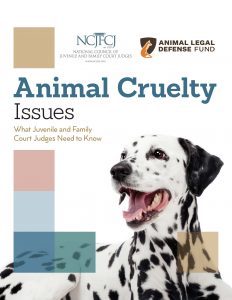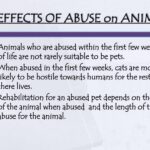Can a child truly be charged with animal cruelty? This inquiry often elicits a multitude of opinions and challenges. As society increasingly acknowledges the significance of animal welfare, the role of juvenile offenders in this sphere demands thorough examination. Understanding juvenile justice regarding animal cruelty not only informs legal procedures but also shapes preventive measures aimed at fostering empathy and responsibility among youth.
The prevalence of animal cruelty cases involving minors brings to light a disconcerting trend. When discussing animal cruelty, it is crucial to differentiate between intentional maltreatment and innocent curiosity. Young children, in particular, may act without fully comprehending the implications of their actions. Henceforth, it becomes imperative to scrutinize the motivations behind such behaviors and the potential consequences that follow.
In the realm of juvenile justice, the first question that arises is whether children are capable of understanding the repercussions of their actions. The cognitive development of a child plays a significant role in this assessment. Children under the age of seven are generally considered incapable of forming criminal intent, which is a critical component of any legal charge. This lack of intent raises fundamental questions about accountability. Can we hold a child responsible for actions they may not fully grasp? As children age, their understanding evolves, and the line between innocence and culpability becomes increasingly nuanced.
Furthermore, various states across the U.S. have different statutes regarding animal cruelty. Some laws explicitly include minors under their jurisdiction, while others do not. Those that do often impose consequences that vary dramatically, ranging from mandated counseling to criminal charges. This disparity indicates a lack of uniformity in the legal system, prompting a reflection on the efficacy of such laws in addressing the root causes of animal cruelty.
One significant challenge arises when dealing with cases of juveniles charged with animal cruelty. The labels we assign to these children can have profound implications. If a child is branded as an “animal abuser,” what message does that send to them and society at large? It cultivates stigmas that may further alienate these young individuals from their communities. Instead of fostering rehabilitation, such labels can promote feelings of isolation and resentment, making it harder for them to learn from their mistakes.
Moreover, the approach taken by the legal system must prioritize education and rehabilitation. A punitive approach may not only fail to deter future offenses but can exacerbate underlying behavioral issues. Programs that emphasize empathy towards animals often yield better outcomes. By cultivating compassion and responsibility, these initiatives seek to instill ethical values within younger generations, promoting a culture that respects all living beings.
Educational programs designed for children and parents alike can be instrumental in addressing animal cruelty at its roots. Teaching children about the needs and emotions of animals can significantly alter their perceptions and relationships with them. Workshops, seminars, and community outreach programs serve as effective platforms for fostering mutual respect between children and animals.
There exists an undeniable connection between animal cruelty and other forms of violence. Research indicates that children who engage in harming animals may also exhibit violent behavior towards their peers or family members. This troubling association makes it essential for educators, parents, and legal professionals to engage in proactive dialogues addressing these behaviors. Ignoring the signs of potential violence can have dire consequences, not only for animals but for the young individuals themselves and society at large.
Consequently, a critical examination of the juvenile justice system reveals a pressing need for comprehensive interventions. Rather than merely focusing on legal culpability, stakeholders must consider empowering children through restoration and education. Community engagement initiatives that encourage children to volunteer in animal shelters or participate in humane education programs foster a sense of responsibility and caretaking.
However, it is equally important to recognize the role of mental health in understanding and addressing animal cruelty. Children who exhibit violent tendencies towards animals may be victims of abuse or neglect themselves. By recognizing the complex interplay between victimization and perpetration, advocates and legal professionals can adopt a more holistic approach to address these issues effectively. Treatment programs that address underlying traumas can be vital in reforming behaviors and safeguarding both animals and vulnerable children.
In conclusion, while children can indeed be charged with animal cruelty, navigating this terrain requires sensitivity and nuance. Recognizing the developmental stages of childhood, alongside understanding the importance of rehabilitation over punishment, is crucial. By fostering educational initiatives and community support, we can encourage a generation that values empathy towards animals. This comprehensive approach not only addresses the immediate concerns of animal cruelty but also spearheads the movement towards a more compassionate future for both humans and animals alike. As we grapple with the question of culpability, the focus must remain on instilling values of kindness and responsibility in our youth.








